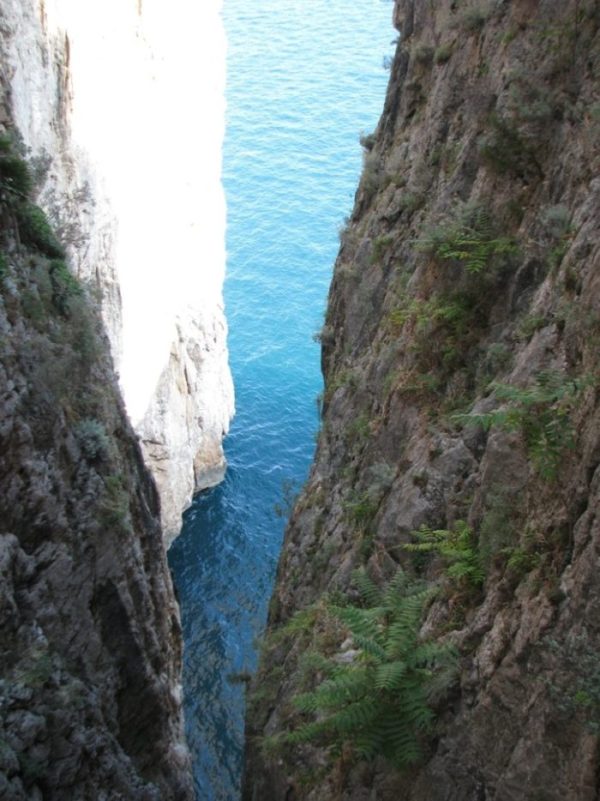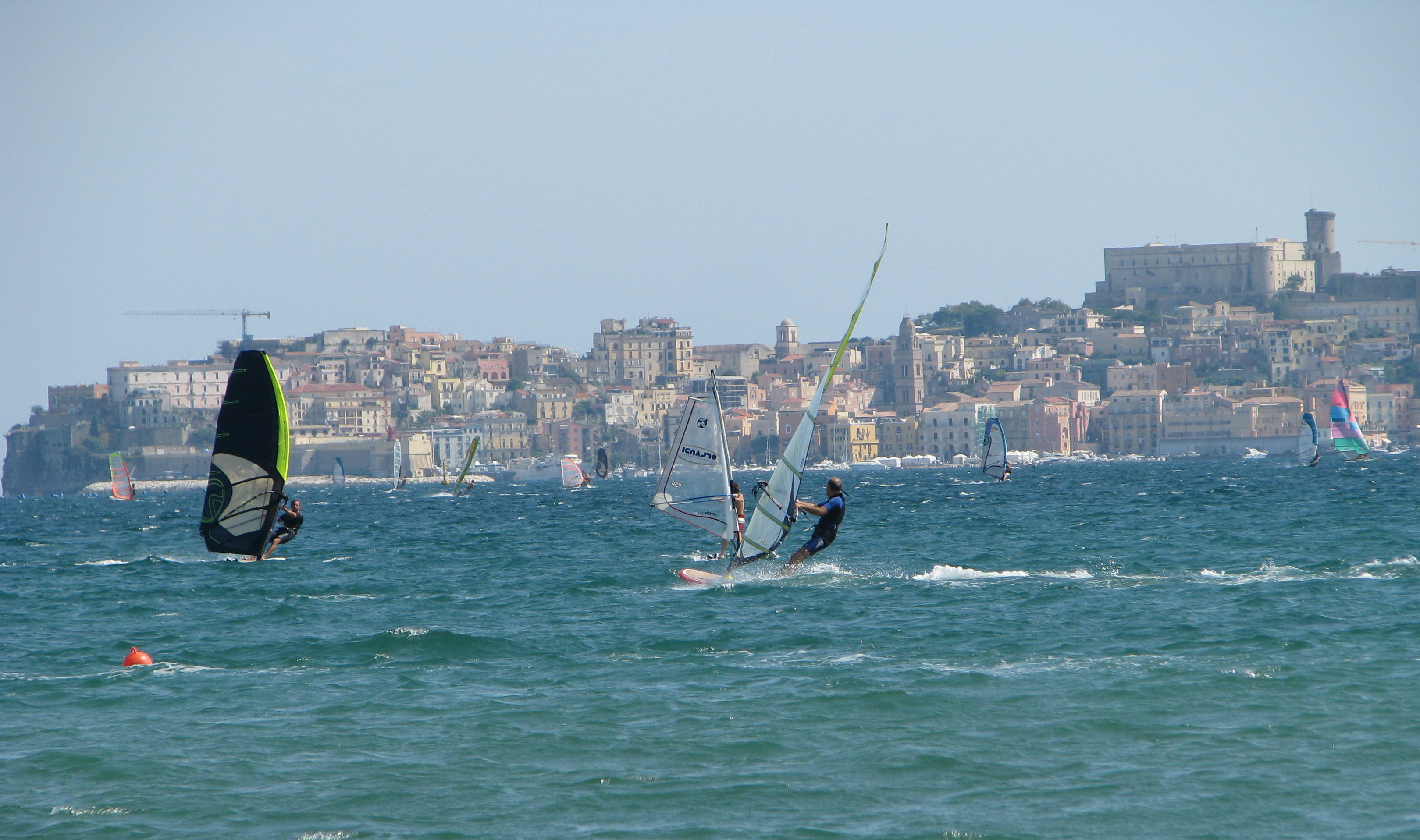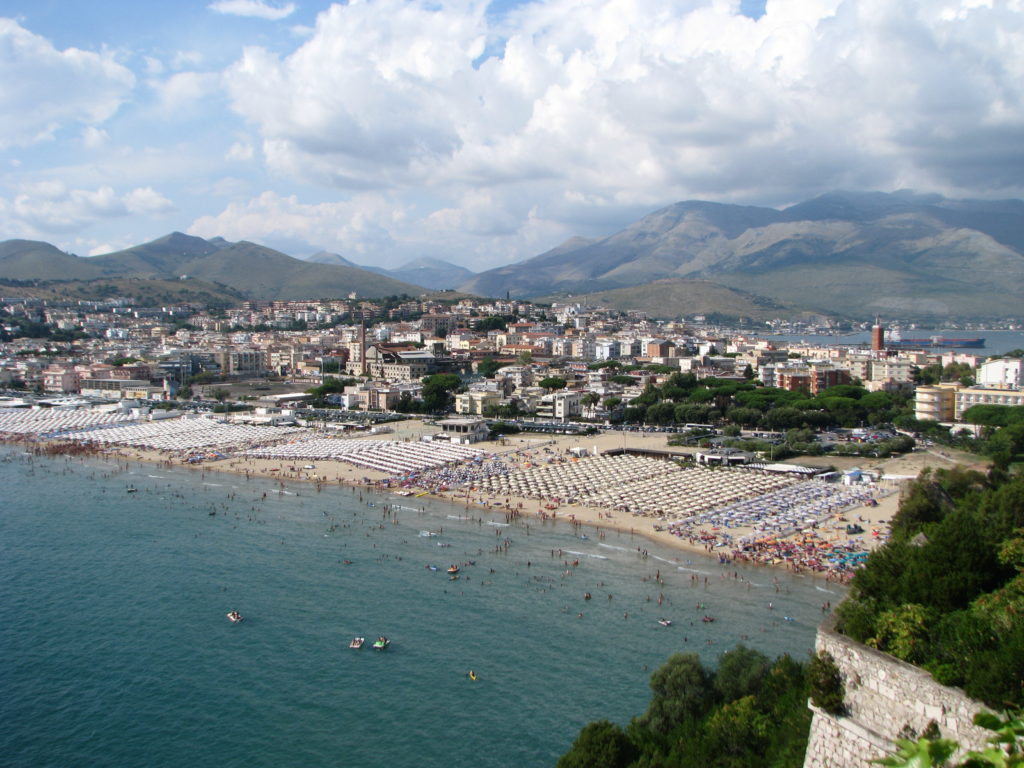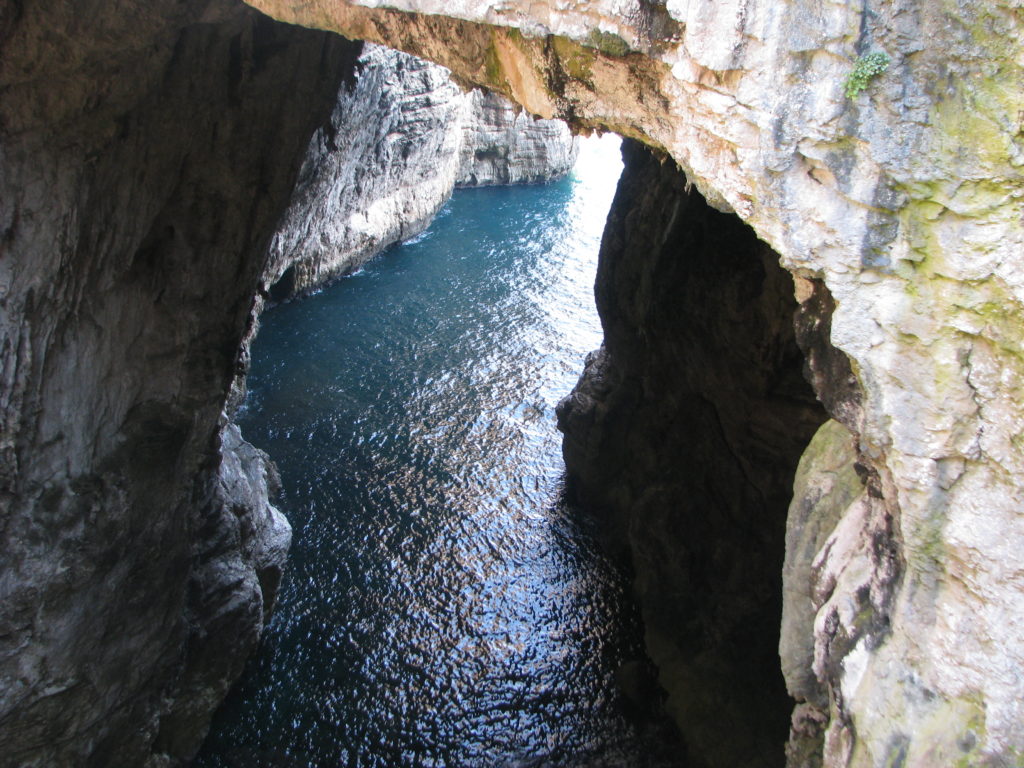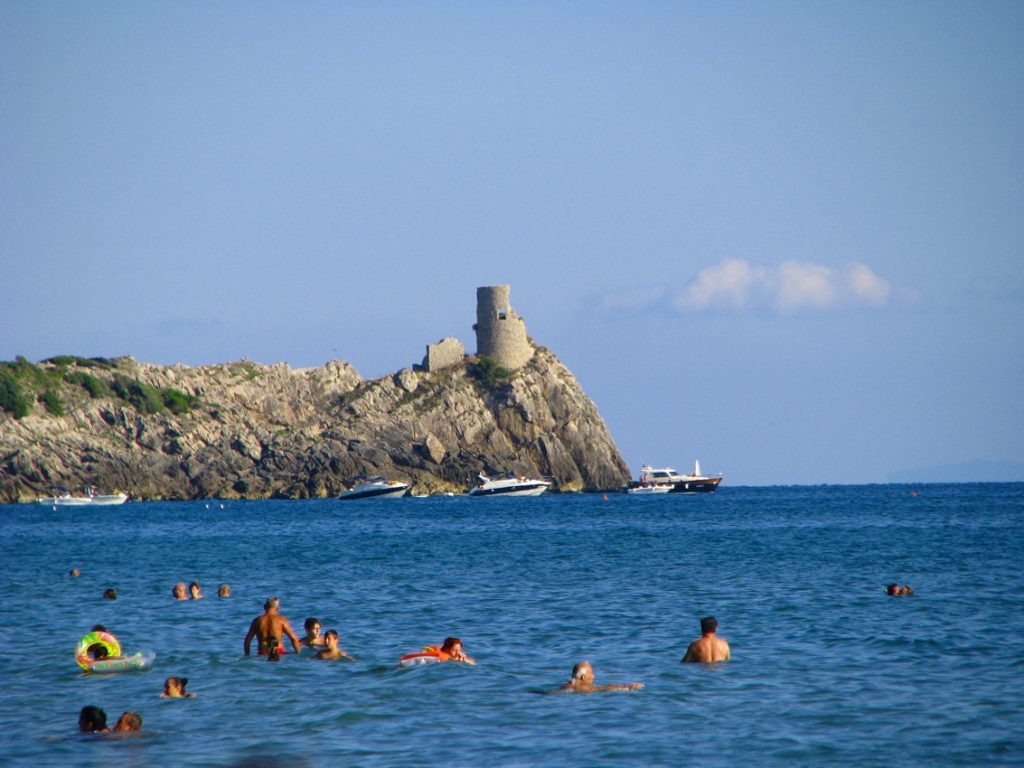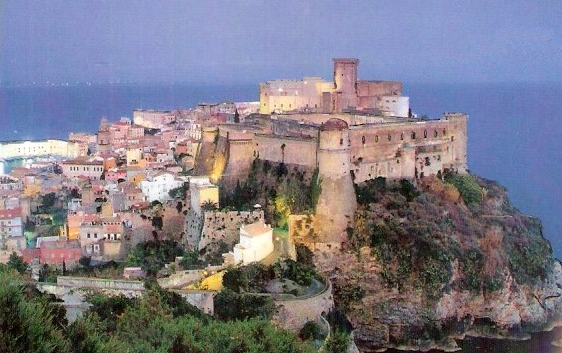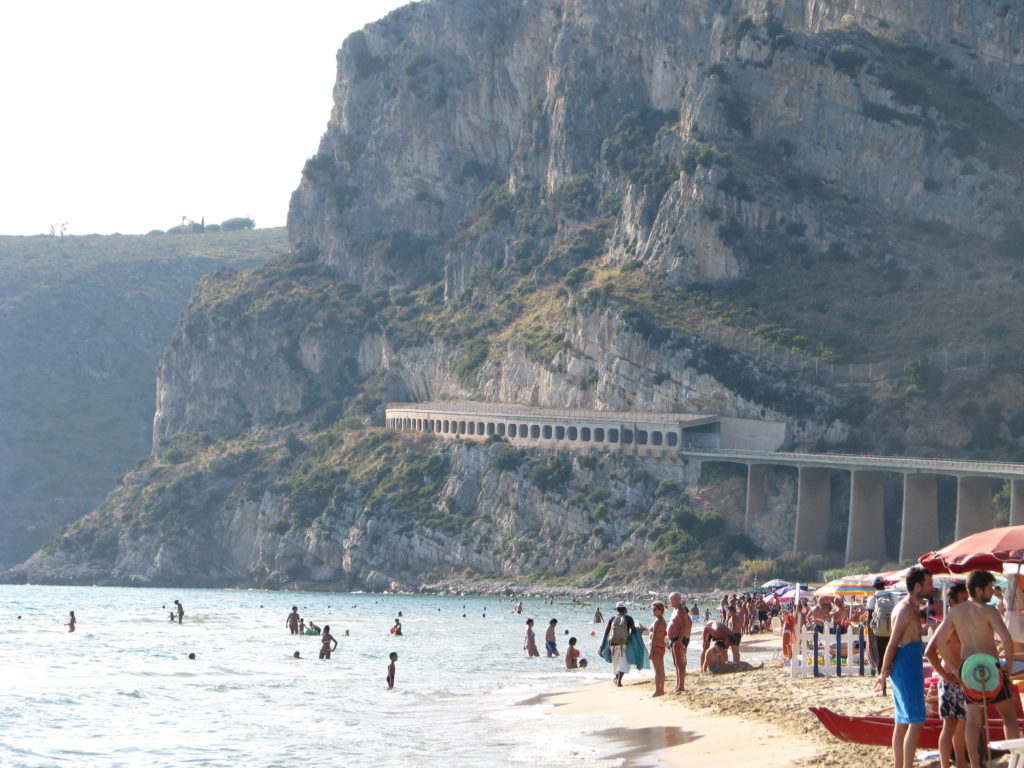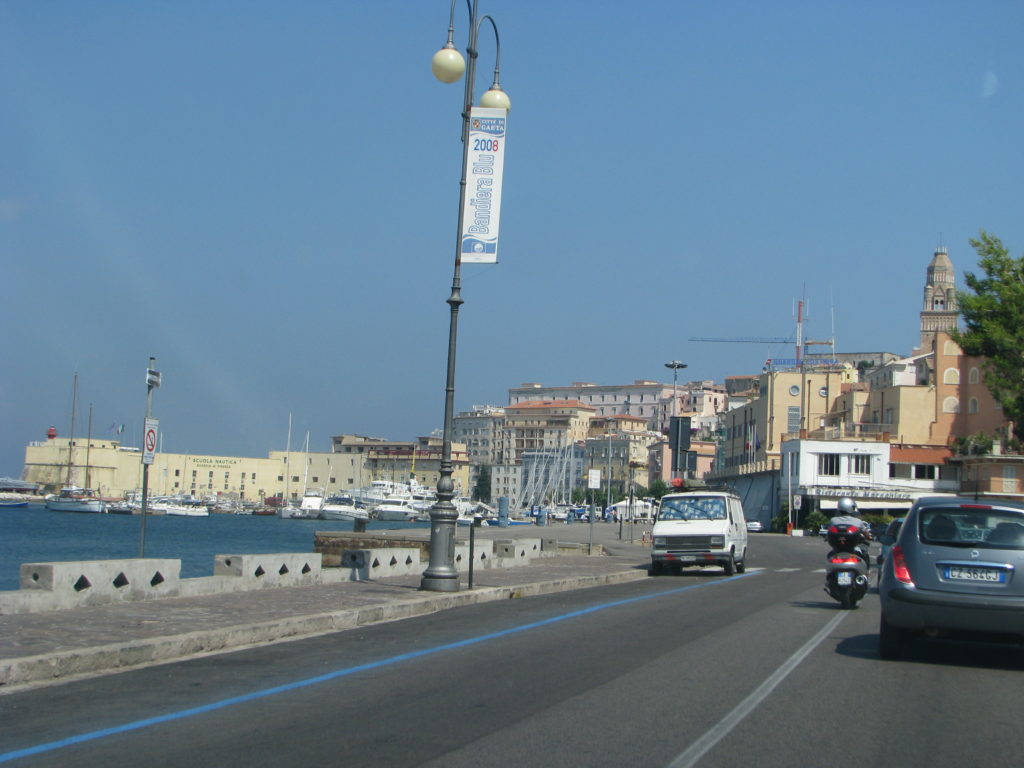The mysterious sea grotto of Montagna Spaccata, or Split Mountain, is a natural wonder found on Monte Orlando, a protected natural park in Gaeta.
According to local stories, God was so distraught at the crucifixion of Christ that He made the earth shake and let out a lightning bolt which created three giant cracks in this mountain. The Sanctuary of Santissima Trinità, or Holy Trinity, was built during the 11th century by the Benedictine monks to honor this event.

